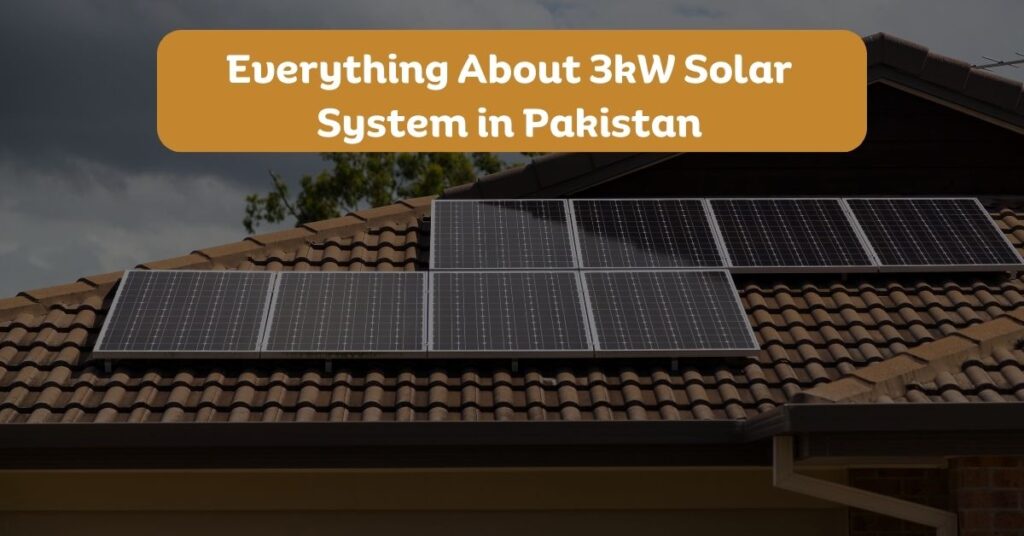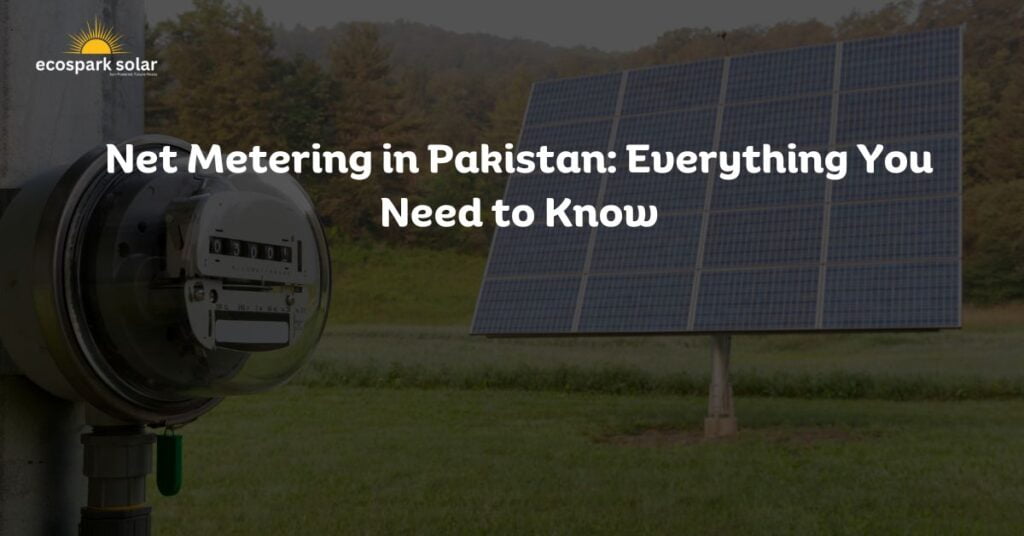Pakistan is experiencing a remarkable surge in solar energy adoption, especially after 2020. The reasons are plenty: Load shedding, higher costs, and the declining prices of solar are some of the reasons.
As the country increasingly embraces solar power, it becomes important for individuals and businesses to familiarize themselves with the various types of solar panels available. Understanding these options would help you optimize energy efficiency, reduce costs, and make informed decisions that align with your specific requirements.
In this comprehensive guide, we will discuss different types of solar panels in Pakistan. From the renowned monocrystalline and polycrystalline panels to the innovative thin-film and bifacial technologies, we will delve into their unique features, advantages, and potential limitations.
Specifically, we will discuss the following solar panel types available to Pakistani solar shoppers.
- Monocrystalline solar panels
- Polycrystalline solar panels
- Thin-film solar panels
- PERC solar panels
- Bifacial solar panels
Let’s begin. But before that, a few things:
Types of Solar Panels in Pakistan
Before we proceed, know that this article doesn’t talk about the type of solar panels by brand. Instead, we will discuss the types of solar available in Pakistan based on the technology and construction.
1. Monocrystalline Solar Panels (Single-Crystalline Solar Panels)
Monocrystalline solar panels are a popular and widely used option in the Pakistani solar sector. These panels stand out for their impressive energy efficiency, a key factor driving their popularity in Pakistan’s solar installations. The high efficiency of monocrystalline panels stems from their unique manufacturing process, where they are made from a single crystal structure of high-purity silicon.
With efficiency rates often in the range of 20-22%, they can convert a significant portion of sunlight into usable electricity. This means they can generate more power from the same amount of sunlight compared to other panel types, making them ideal for areas with limited space or regions that experience shading or cloudy conditions.
The exceptional efficiency of monocrystalline panels is due to their uniform crystal structure. The single crystal structure allows for more efficient movement of electrons, reducing energy losses within the panel. Additionally, the high-purity silicon used in their production further enhances their ability to convert sunlight into electricity effectively.
However, monocrystalline panels are generally more expensive compared to other solar panel options. But this upfront cost is offset by its increased efficiency. Talking about their lifespan, monocrystalline panels are known for their robust construction, ensuring reliable performance over 25+ years.
In Pakistan, Jinko N-Type, Canadian N-Type, Longi and AstroEnergy offers monocrystalline solar panels.
Interesting Read: How Much Power Does One Solar Panel Produce?
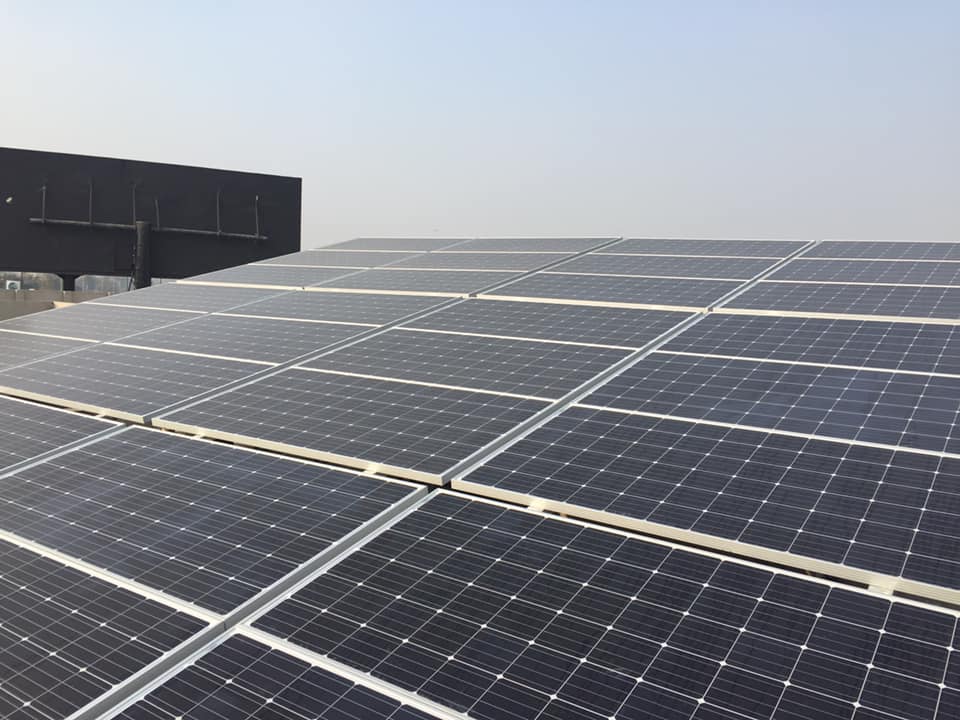
2. Polycrystalline Solar Panels (Multi-Crystalline Solar Panels)
Polycrystalline solar panels, or multi-crystalline panels, are another popular choice for solar installations in Pakistan. These panels get their name from their manufacturing process, where the silicon material comprises multiple crystals instead of a single crystal structure. This results in a distinctive appearance with a mottled blue color, setting them apart from monocrystalline panels.
While polycrystalline solar panels generally have slightly lower efficiency than monocrystalline panels, technological advancements have significantly narrowed the efficiency gap. Polycrystalline panels typically offer conversion efficiencies ranging from 15% to 18%, which is still highly respectable and capable of generating substantial solar energy. The efficiency of polycrystalline panels has improved over time due to advancements in production techniques and the use of high-quality silicon materials.
In terms of longevity, polycrystalline solar panels are known for their durability and reliability. With proper installation and maintenance, they can have a lifespan of 25 years or more. However, it is worth noting that the exact lifespan can vary depending on factors such as climate conditions and maintenance practices.
Distinguishing polycrystalline panels from monocrystalline panels is relatively straightforward. The most apparent visual distinction is the appearance of polycrystalline panels, which typically exhibit a mosaic-like pattern with a blue hue due to the multiple crystal structures. In contrast, monocrystalline panels have a uniform black or dark blue color and have a square dot at the corners of their cells.
Another way to differentiate them is by their price point. Polycrystalline panels are generally more cost-effective compared to monocrystalline panels, making them an attractive option for those seeking a balance between efficiency and affordability.
You May Like to Read: Types of Solar Inverters in Pakistan
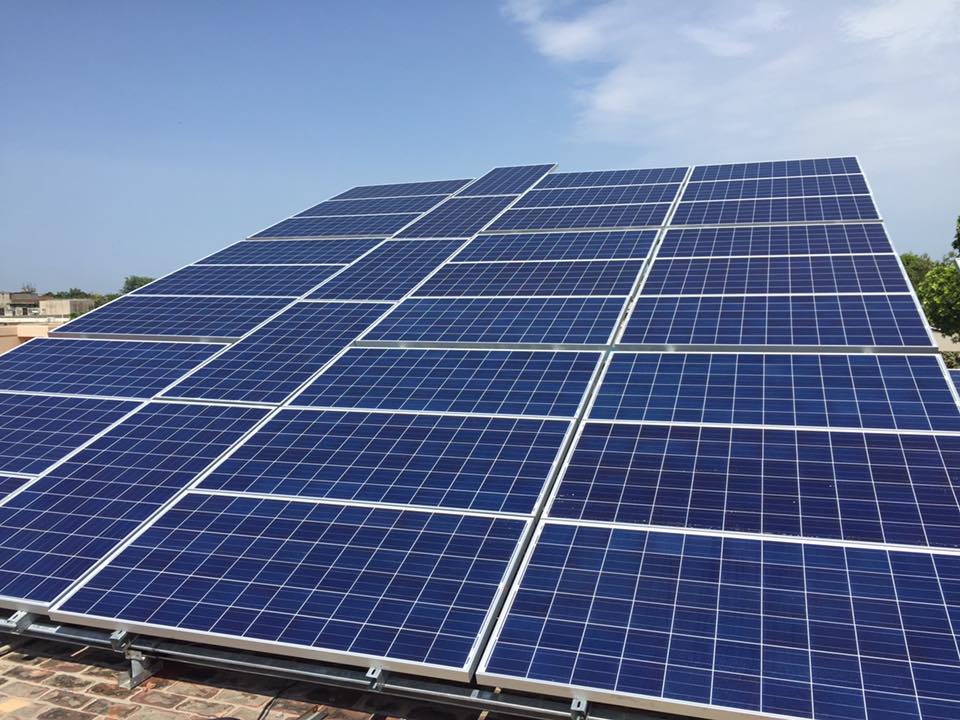
A solar system for everyone.
We’re customer-centric; we will find you a solution within your budget. Whatever your project size, you can always save with Ecospark Solar.
3. Thin-Film Solar Panels
Thin-film solar panels are a unique and innovative type of solar technology that offers distinct advantages in certain applications. Unlike monocrystalline and polycrystalline panels, thin-film panels are made by depositing a thin layer of photovoltaic material onto a substrate, such as glass or metal. This manufacturing process allows for flexibility, lightweight design, and potential cost savings. They have a uniform and smooth appearance, lacking the visible individual cells found in crystalline silicon panels. Additionally, their color may vary depending on the specific material used, ranging from dark brown to a bluish-black hue.
While thin-film solar panels have certain advantages, they generally have lower efficiency compared to crystalline silicon panels. Thin-film panels typically have efficiency rates ranging from 10% to 12%. However, it’s important to note that their lower efficiency is compensated by other factors such as lower costs, improved performance in low-light conditions, and a broader spectral response, enabling them to generate electricity even under cloudy or shaded conditions. Their ability to cover larger areas also offsets the lower efficiency, making them suitable for large-scale installations where space is not a constraint.
In terms of longevity, thin-film solar panels have shorter lifespans compared to the above two types, typically 10-20 years. Also, their performance degradation rate may be slightly higher compared to crystalline silicon panels over time. Regular maintenance and proper installation practices can help mitigate this degradation and ensure optimal performance throughout their lifespan.
You May Want to Read: Comparing Solar Installations: On-Grid vs. Hybrid vs. Off-Grid Solar Systems
While thin-film solar panels have their advantages, they are generally not considered a suitable fit for residential homes in Pakistan. This is primarily due to their lower efficiency compared to crystalline silicon panels. In a country with abundant sunlight like Pakistan, opting for higher-efficiency panels to maximize energy generation from limited rooftop space is more beneficial. However, thin-film panels can find practical applications in large-scale commercial installations or projects where space is not a constraint, such as solar farms or industrial installations.
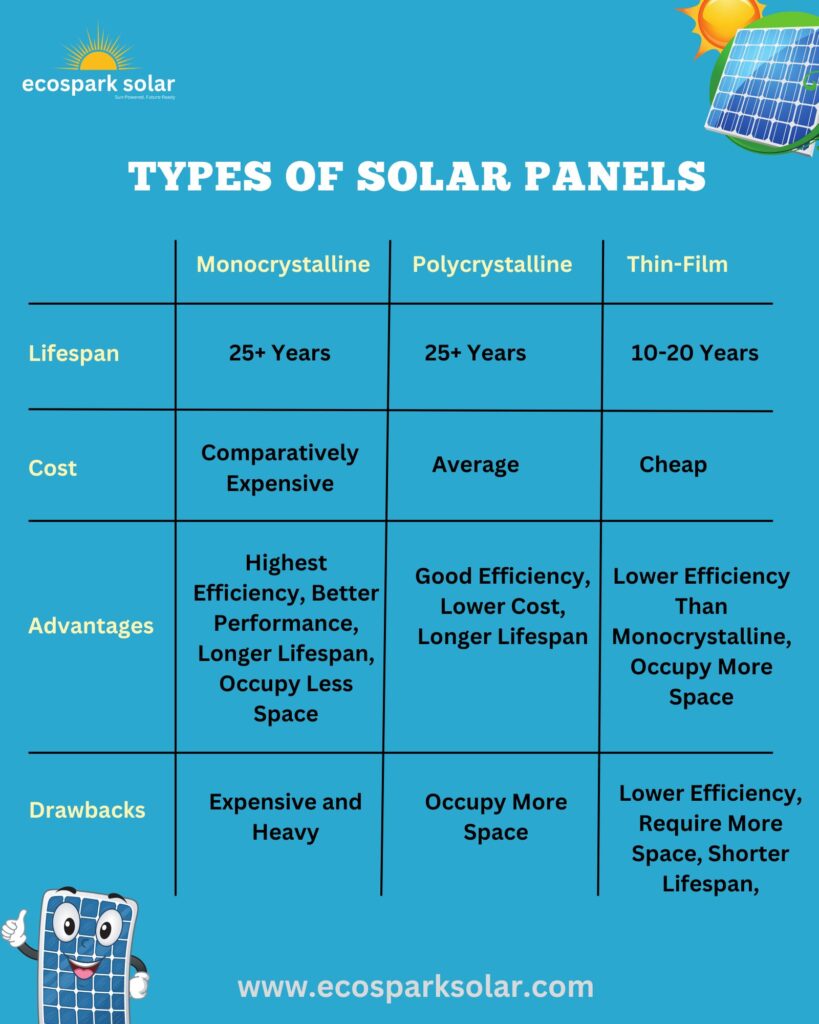
4. Passivated Emitter and Rear Cell (PERC) Solar Panels
PERC stands for Passivated Emitter and Rear Cell. It’s not a different type of solar panel but a clever technology that can be added to different kinds of solar panels to make them more efficient. The cool thing about PERC is that it helps the solar cells inside the panels work smarter and generate more electricity.
Here’s how it works: PERC technology adds a special layer to the back of the solar cells. This layer helps to prevent energy loss by reducing something called electron recombination. Think of it like plugging any little holes where the energy might leak out. By doing this, PERC technology enables solar cells to collect and use more sunlight, producing more electricity.
One of the best parts about PERC technology is that it can be used with both monocrystalline and polycrystalline solar panels. This means that solar panel manufacturers can upgrade their existing designs with PERC technology, giving people more options to choose from when selecting solar panels for their homes.
Many solar panels available in the Pakistani market have utilized this technology. Do ask your solar installer if the panels installed on your rooftop are PERC or non-PERC.
In Spotlight: Peak Sun Hours in Pakistan
5. Bifacial Solar Panels
Have you ever heard of bifacial solar panels? They’re a fascinating innovation that can make solar panels even more effective at generating electricity. Bifacial technology is not a separate type of solar panel like monocrystalline or polycrystalline panels. Much like PERC, it’s a special feature that can be added to different types of solar panels—mono and poly, for example—to enhance their performance.
Now, let’s dive into how bifacial solar panels work. Just like their name suggests, these panels have the ability to harness sunlight from both sides. While traditional solar panels capture sunlight only from their front side, bifacial panels have an extra advantage. They have a transparent back sheet or a glass back, allowing them to absorb sunlight from the front and backside, which is usually reflected light.
By capturing sunlight from both sides, bifacial solar panels can generate more electricity compared to conventional panels. When sunlight hits the front side of the panel, it produces electricity, as usual. But here’s where it gets interesting—the backside of the panel also plays a role. It captures sunlight that bounces off surfaces like the ground or nearby buildings, turning that reflected light into additional electricity. This means that bifacial panels can make the most out of available sunlight, boosting their overall energy output.
So, why is this important? Well, by utilizing both sides of the panel, bifacial technology increases the potential for electricity generation. This can be especially beneficial in areas with high albedo (surface reflectivity), like snowy landscapes or regions with bright surroundings. It also opens up opportunities for creative installation methods, such as mounting panels on canopies or over water bodies, where the panels can capture sunlight from above and reflected light from below.
Related Read to This Article: The Price of Solar Panels in Pakistan (Brand Wise)
Are Bifacial and PERC Solar Panels the Same?
No, Passivated Emitter and Rear Cell (PERC) panels and bifacial solar panels are not the same, although they both represent advancements in solar panel technology.
PERC panels are a type of monocrystalline solar panel that incorporates a passivated emitter and a rear cell structure. The passivation process involves applying a thin layer of insulating material to the front surface of the solar cell, reducing recombination losses and improving the cell’s overall efficiency. The rear cell design allows for improved light absorption and reflection within the panel, further enhancing its performance.
On the other hand, bifacial solar panels are a different type of solar panel that can generate electricity from both sides of the module. Unlike traditional solar panels that only utilize the front side to convert sunlight into electricity, bifacial panels have transparent back sheets or glass on the rear side, allowing them to capture light that reflects off the ground or other surfaces. This additional exposure to light can result in increased energy production.
While PERC panels and bifacial panels are separate technologies, it is possible for a solar panel to combine both features and be a PERC bifacial panel. Such panels would incorporate the passivated emitter and rear cell structure while having a design allowing energy generation from both sides of the module.
Types of Solar Panels in Pakistan: Concluding Thoughts
That was all about solar panel types in Pakistan. While the market is littered with different types of solar panels, make sure that you choose the type that works best for you. Monocrystalline solar panels are by far the best ones. But we have installed poly for some of our customers, and they are equally happy. If you have space issues, go for mono, as you would be able to generate more power in less space. If space is not the issue, you can go for polycrystalline solar panels.
Still confused? We are here. Just leave us a message, and we will guide you about the best practices based on your goals and needs.
While you are here, you might want to give a read to:

